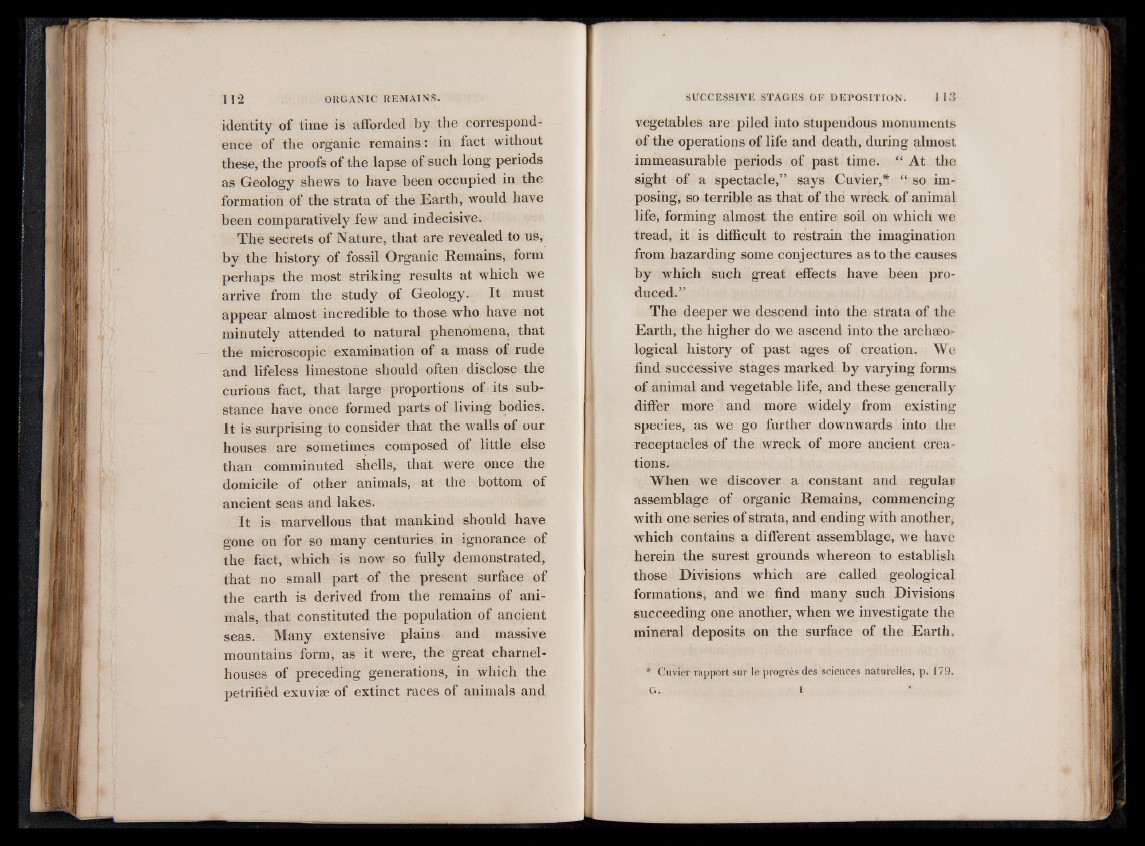
identity of time is afforded by the correspondence
of the organic remains: in fact without
these, the proofs of the lapse of such long periods
as Geology shews to have been occupied in the
formation of the strata of the Earth, would have
been comparatively few and indecisive.
The secrets of Nature, that are revealed to us,
by the history of fossil Organic Remains, form
perhaps the most striking results at which we
arrive from the study of Geology. It must
appear almost incredible to those who have not
minutely attended to natural phenomena, that
the microscopic examination of a mass of rude
and lifeless limestone should often disclose the
curious fact, that large proportions of its substance
have once formed parts of living bodies.
It is surprising to consider that the walls of our
houses are sometimes composed of little else
than comminuted shells, that were once the
domicile of other animals, at the bottom of
ancient seas and lakes.
It is marvellous that mankind should have
gone on for so many centuries in ignorance of
the fact, which is now so fully demonstrated,
that no small part of the present surface of
the earth is derived from the remains of animals,
that constituted the population of ancient
seas. Many extensive plains and massive
mountains form, as it were, the great charnel-
houses of preceding generations, in which the
petrified exuviae of extinct races of animals and
vegetables are piled into stupendous monuments
of the operations of life and death, during almost
immeasurable periods of past time. “ At the
sight of a spectacle,” says Cuvier,* “ so imposing,
so terrible as that of the wreck of animal
life, forming almost the entire soil on which we
tread, it is difficult to restrain the imagination
from hazarding some conjectures as to the causes
by which such great effects have been produced.”
The deeper we descend into the strata of the
Earth, the higher do we ascend into the archaeological
history of past ages of creation. We
find successive stages marked by varying forms
of animal and vegetable life, and these generally
differ more and more widely from existing
species, as we go further downwards into the
receptacles of the wreck of more ancient creations.
When we discover a constant and regular
assemblage of organic Remains, commencing
with one series of strata, and ending with another,
which contains a different assemblage, we have
herein the surest grounds whereon to establish
those Divisions which are called geological
formations, and we find many such Divisions
succeeding one another, when we investigate the
mineral deposits on the surface of the Earth.
* Cuvier rapport sur le progrès des sciences naturelles, p. 179.
G.